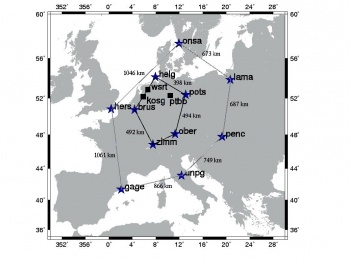If you wish to contribute or participate in the discussions about articles you are invited to contact the Editor
WARTK Systems: Difference between revisions
| Line 11: | Line 11: | ||
==WARTK Systems== | ==WARTK Systems== | ||
User Receiver that can applied WARTK techniques are not still in the market. The gAGE/UPC group have been done several test with simulated data and also with real data. In the case of WARTK-3 the work has been done together with ESTEC/ESA, as simulated data from GALILEO constellation is needed. In the following, the most representative experiments carried with WARTK are described: | User Receiver that can applied WARTK techniques are not still in the market. The gAGE/UPC group have been done several test with simulated data and also with real data. In the case of WARTK-3 the work has been done together with ESTEC/ESA, as simulated data from GALILEO constellation is needed. In the following, the most representative experiments carried with WARTK are described: | ||
[[File:WARTK2test.JPG|350px|thumb|WARTK-2 technique test in Europe.]] | |||
*Test for WARTK-2 technique: Results during the recent Solar Maximum peak, with several European stations (see figure) during four consecutive days, 110-113 of 2000. In this scenario the geomagnetic activity is low to moderate, but the typical vertical Total Electron Content value at noon is 60 TECU (and STEC until 300 TECU and more), i.e. 3 times the values in 1998. | *Test for WARTK-2 technique: Results during the recent Solar Maximum peak, with several European stations (see figure) during four consecutive days, 110-113 of 2000. In this scenario the geomagnetic activity is low to moderate, but the typical vertical Total Electron Content value at noon is 60 TECU (and STEC until 300 TECU and more), i.e. 3 times the values in 1998. | ||
Revision as of 07:06, 15 June 2011
| Fundamentals | |
|---|---|
| Title | WARTK Systems |
| Author(s) | GMV |
| Level | Basic |
| Year of Publication | 2011 |
The Wide Area RTK (WARTK) concept was introduced in the late 1990s by the Research Group of Astronomy and Geomatics (gAGE) from the Technical University of Catalonia (UPC). The WARTK method dramatically increases the RTK/NRTK service area, with permanent stations separated by up to 500–900 kilometers. RTK reference stations should be of the order of ten km distance from rover, because the ionosphere produces ambiguity estimation biases that lead to positioning error above 1 meter. The main WARTK techniques are related to an accurate real-time computation of ionospheric corrections, combined with an optimal processing of GNSS observables (carrier phases in particular) in both 2 and 3-frequency GNSS systems.
WARTK Systems
User Receiver that can applied WARTK techniques are not still in the market. The gAGE/UPC group have been done several test with simulated data and also with real data. In the case of WARTK-3 the work has been done together with ESTEC/ESA, as simulated data from GALILEO constellation is needed. In the following, the most representative experiments carried with WARTK are described:
- Test for WARTK-2 technique: Results during the recent Solar Maximum peak, with several European stations (see figure) during four consecutive days, 110-113 of 2000. In this scenario the geomagnetic activity is low to moderate, but the typical vertical Total Electron Content value at noon is 60 TECU (and STEC until 300 TECU and more), i.e. 3 times the values in 1998.
Notes

